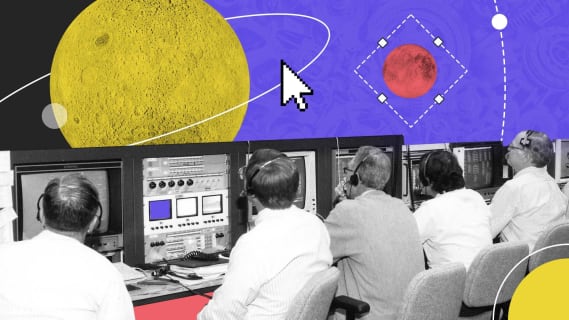December Designers’ Digest
Being on track with current trends and staying up to date with innovation is a key responsibility of each high quality UX/UI product designer or product owner. If we continue following our set guidelines and don’t use new technologies and sources, we will find ourselves falling behind the competition, who may overtake us in innovation and finding better solutions for users’ needs. Here’s five noteworthy sources with currently relevant information which may help you to answer design challenges better, and with more suitable tools. Whether you are a product designer or a product owner - here are some interesting readings that can inspire you and your team to work smarter.

Table of contents
Supercharging design with AI tools
Discover tools built using artificial intelligence, which can increase your productivity and boost design efficiency. Instead of allowing AI to overwhelm us, we can start using its potential today and become innovative product designers. Publicly available tools allow us to more easily find or create new graphics or texts, as well as even conduct user testing, which will give us more time to design.
Discover AI tools for designers: 8 AI Tools That You Can Use RIGHT NOW to Supercharge Your Design
ChatGPT as a prime example of AI for designers
With so many AI tools available, one prime example we want to turn our focus to is ChatGPT. Imagine asking a virtual assistant for a quick idea or content for your project. With the GPT3 AI model, we can ask questions or give tasks and receive immediate feedback. From generating text and code to creating prompts for AI image generators such as Dall·E 2, this bot can do many things and harnessing its power might be the future of product design.
Read more about ChatGPT for product designers: Exploring the Power of OpenAI ChatGPT for product designers
Mobile-centered users and the future of micro-moments
Have you noticed how many individuals constantly reach for their phones, especially at social gatherings or at restaurants? We can divide such short impulsive interactions into so-called micro-moments. We instinctively reach for our phones to take pictures, check our texts, or browse our social media feeds. These micro interactions can be divided into I-want-to-know, want-to-go, want-to-do and want-to-buy categories of behavior. Learn how to design for even the smallest of interactions, which play a drastic role in quick but decisive decision making and forming first impressions.
Read more about micro-moments: How to Design for Micro-Moments
The “Back” button - what could go wrong?
We may not pay attention to how our designs are implemented and how users may interact with, e.g. their browsers. A common issue with designing websites is behaviors not consistent with our expectations. Users have grown accustomed to using the “Back” button on their browser to return to the previous view or step that the user had found themselves at. Issues which often arise are lost data when going back to a previous step or finding oneself on a different page. For users it is not always clear what is a new page, a popover, or a filtered view. As designers, we must provide clear back options on our products to allow users to return to the specific previous view, as well as specify to our developers how a certain form or process should appear when operating the Back/Next page buttons.
Read more about “Back” button mistakes: 4 Design Patterns That Violate “Back” Button UX Expectations – 59% of Sites Get It Wrong
Too many alerts, too little clarity
As product designers, we are constantly looking out for the well-being and satisfaction of our users. When trying to provide valuable information on dashboards with active alerts or notifications, we may get distracted by the desire to increase usability and forget about how our users perceive such information in a world already overwhelmed with information. Learn how users perceive alerts in digital products and how we can design them in a way which will be better received by our end users and act as intended, prompting action in case of true urgency.
Read about alert fatigue: Alert Fatigue in User Interfaces
New technologies and solutions will always appear difficult or tough to implement in our daily workflow, but after simple acknowledgement of their existence and further education on current innovation topics, we will remember which tools exist, how they can support us or our users, and how we can make our products as fresh and trustworthy as possible.
Share this article:







